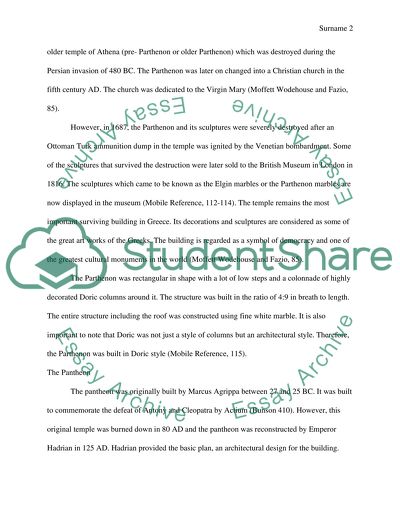Cite this document
(“The Parthenon & Pantheon Essay Example | Topics and Well Written Essays - 1000 words”, n.d.)
Retrieved from https://studentshare.org/history/1424260-parthenon-pantheon
Retrieved from https://studentshare.org/history/1424260-parthenon-pantheon
(The Parthenon & Pantheon Essay Example | Topics and Well Written Essays - 1000 Words)
https://studentshare.org/history/1424260-parthenon-pantheon.
https://studentshare.org/history/1424260-parthenon-pantheon.
“The Parthenon & Pantheon Essay Example | Topics and Well Written Essays - 1000 Words”, n.d. https://studentshare.org/history/1424260-parthenon-pantheon.


